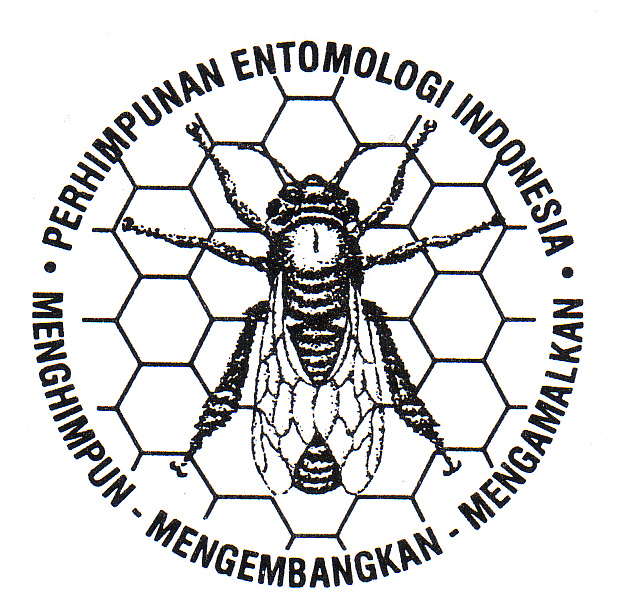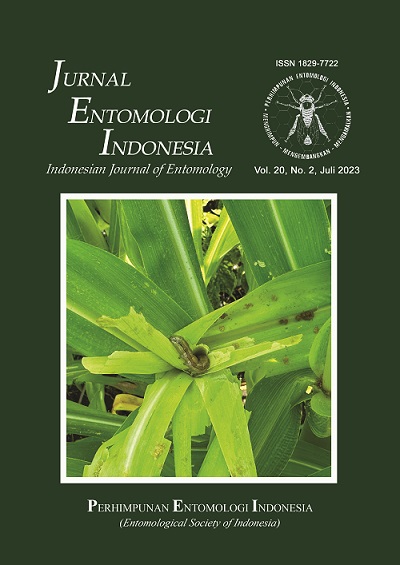Analisis senyawa volatil dari ekstrak tanaman yang berpotensi sebagai atraktan parasitoid telur wereng batang coklat, Anagrus nilaparvatae (Pang et Wang) (Hymenoptera: Mymaridae)
DOI:
https://doi.org/10.5994/jei.12.1.48Keywords:
Attractant, parasitoid, planthopper, volatilesAbstract
Plants produce volatiles as communication cues intra- or inter- species. Infested plants by herbivores will produce volatiles as indirect defense mechanism that attracts natural enemies of herbivores. Analysis of volatiles compounds produced by rice plant as result of infested brown plant hopper (BPH), Nilaparvata lugens Stâl, was done to identify compounds in the volatiles that potentially can be used as attractant for egg parasitoids of BPH, Anagrus nilaparvatae (Pang et Wang) (Hymenoptera: Mymaridae). This research was an early stage to develop formulation of parasitoid attractant. The research activities include volatiles extraction of infested rice stem by BPH eggs using acetone, n-hexane as the extraction solvents; analyses of volatile compounds with GC-MS; and bioassay of parasitoid orientation behavior to the volatiles using olfactometer methods. Extraction methods applied were maceration and continuous extraction followed by concentration. Bioassay on the parasitoid orientation behavior was done by using Y-tube olfactometer and every lot of bioassay using 30 parasitoid females with 3 replicates. The results showed that the volatile compounds of extract of infested rice stem by BPH eggs comprise of 16 components. The highest proportion of the components extracted with acetone is 2-Pentanone, 4-hydroxy-4-methyl (19,9%), while those with n-hexane is Hexanedioic acid, dioctyl ester (65%). A. nilaparvatae showed positive response to the volatiles extracted from infested rice plant by N. lugens eggs. Therefore, the volatiles can be used as an attractant for the egg A. nilaparvatae to support rice pest management.
Downloads
Published
How to Cite
Issue
Section
License
Authors who publish with this journal agree to the following terms:
- Authors retain copyright and grant the journal right of first publication with the work simultaneously licensed under a Creative Commons Attribution 4.0 International License that allows others to share the work with an acknowledgement of the work's authorship and initial publication in this journal.
- Authors are able to enter into separate, additional contractual arrangements for the non-exclusive distribution of the journal's published version of the work (e.g., post it to an institutional repository or publish it in a book), with an acknowledgement of its initial publication in this journal.
- Authors are permitted and encouraged to post their work online (e.g., in institutional repositories or on their website) prior to and during the submission process, as it can lead to productive exchanges, as well as earlier and greater citation of published work (See The Effect of Open Access).








